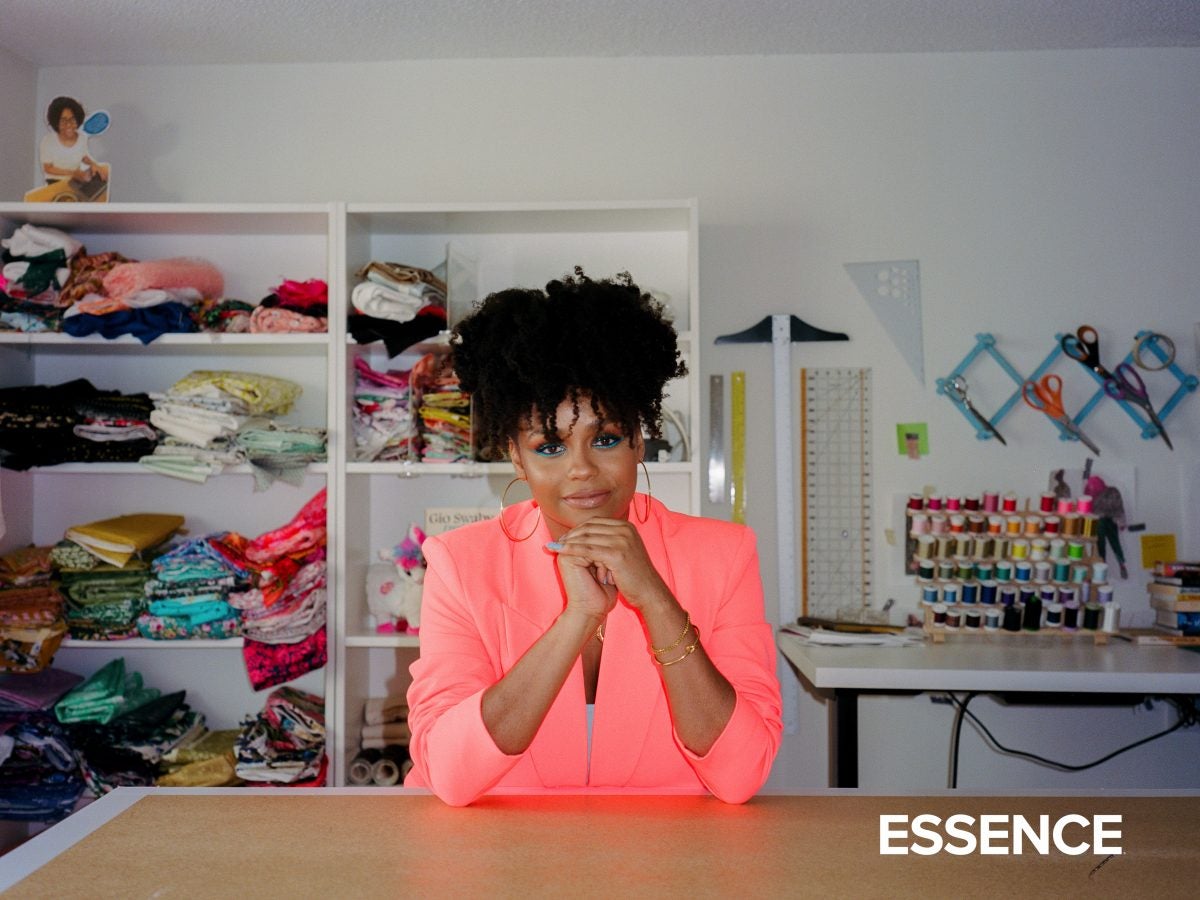
Gio Swaby crafts layered textiles of various colors and patterns that explore both Blackness and womanhood. Acknowledging the number of stigmas attached to both classifications, the Bahamian visual artist hopes that her installations will serve as a contrast to existing stereotypes by promoting love, happiness and inclusion.
“I think it’s important to document our personal history, which often includes moments of struggle—but I also want my portraits to provide relief from those negative experiences,” says Swaby. “As Black people, we have traditionally been bombarded with images of ourselves in intense suffering. So my work should be a counterpoint to that, to offer moments in which we see ourselves uplifted—shown with love, with care and with the reverence that we deserve.”
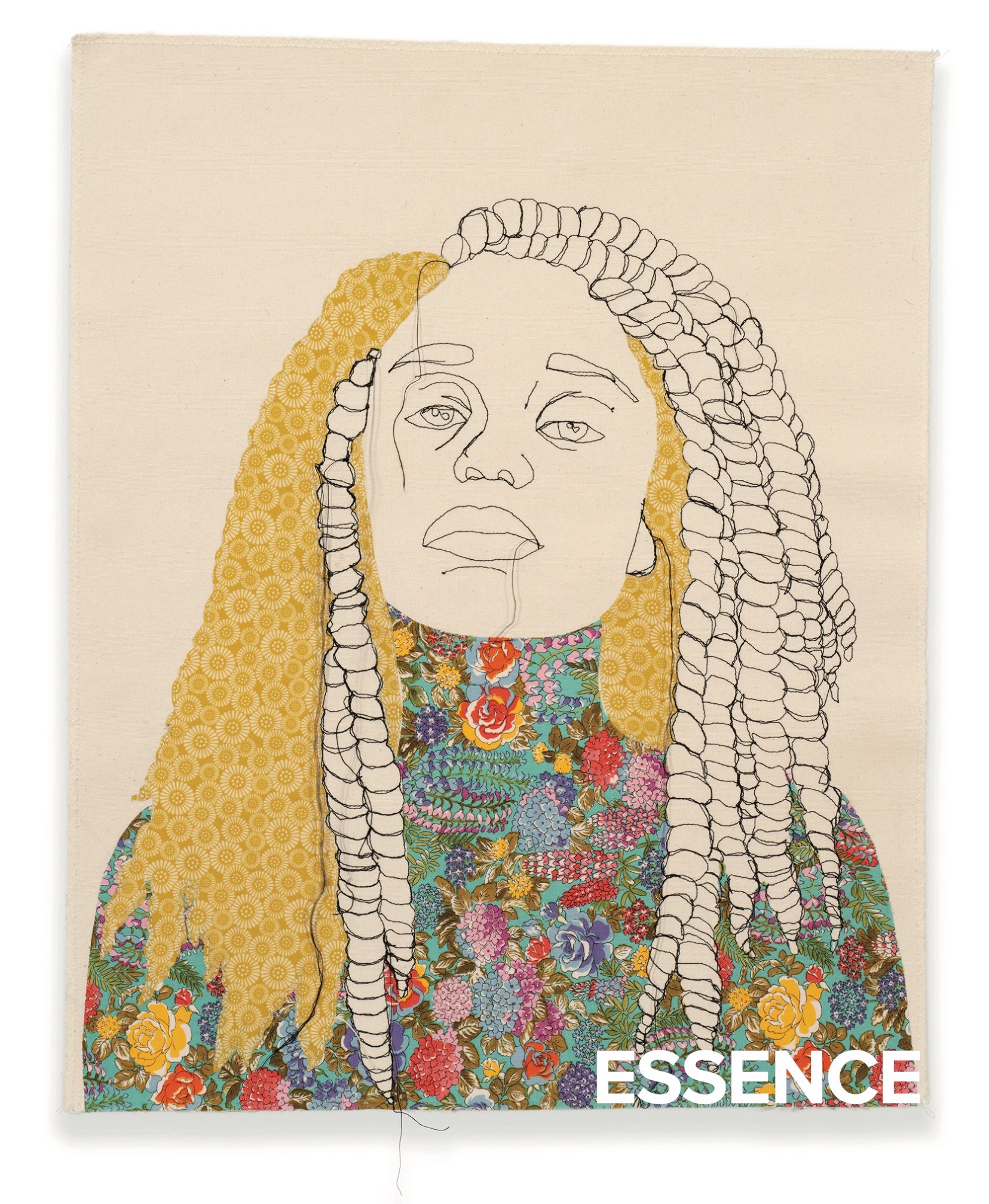
Growing up in Nassau, Bahamas, Swaby, 31, never had a connection to the art world. “I just didn’t have that exposure, as none of my family members were artists and there weren’t many museums in the Bahamas,” she explains. But in watching and working alongside her seamstress mother, who sewed clothing for days on end, Swaby was introduced to a different type of creating. Those moments would influence the way she approached her craft in the future and would lay the foundation for her deep respect for Black women.
Swaby began her artistic journey at the College of the Bahamas, then moved to Canada to attend the Emily Carr University of Art + Design in Vancouver. During a residency at Popop Studios back in Nassau, Swaby met a quilter who taught her different sewing techniques, deepening the link between what she’d learned from her mother and her own artistic interests. It was then that Swaby began designing her first textile portraits, as she experimented with fabrics and developed the style of art for which she’s known today.
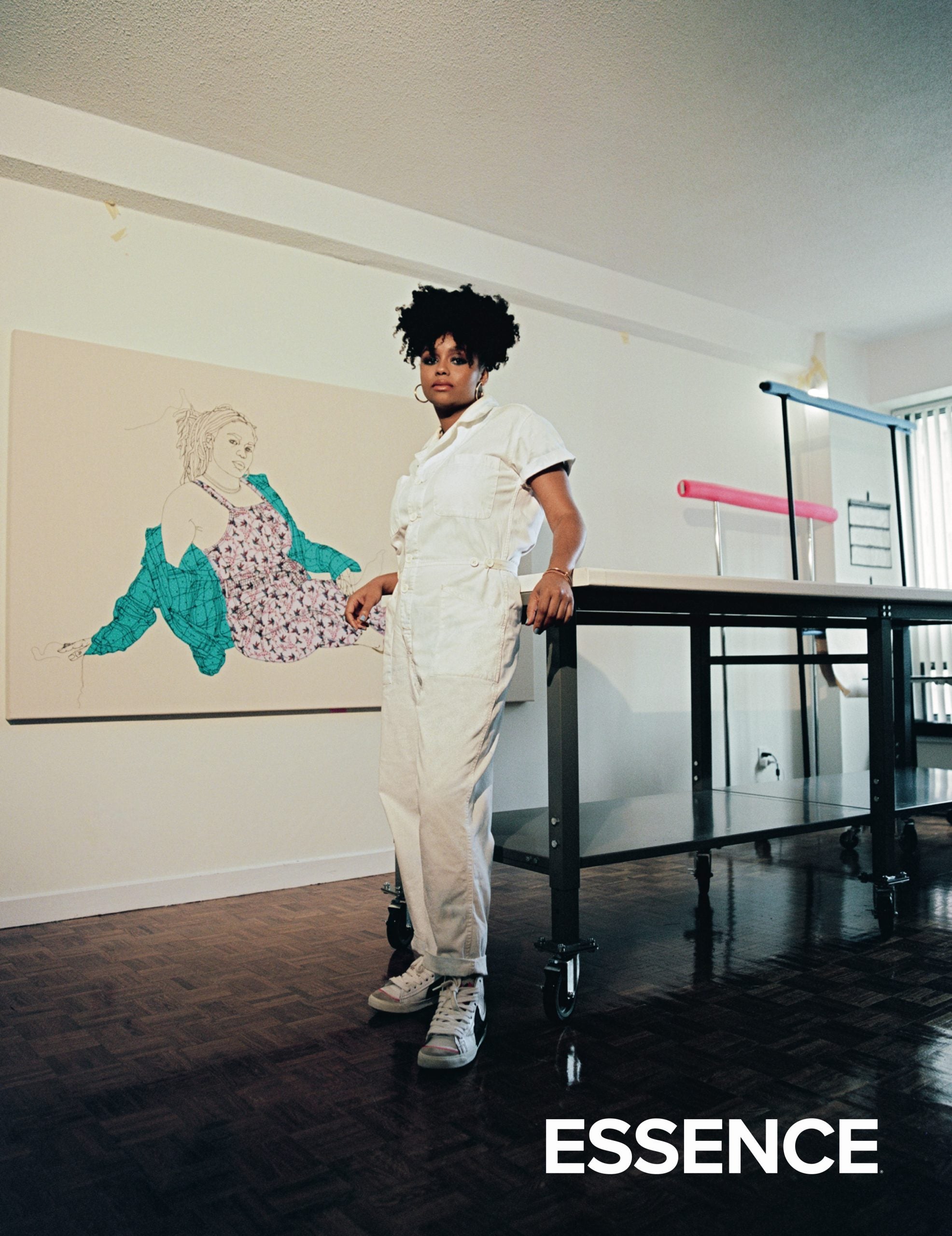
“When we think of quilting and embroidery, the back is a side that we usually don’t get to see as viewers,” she says. “It’s a part that’s often hidden—we don’t want to share that aspect with the viewer because it shows potential mistakes. But for me, showing the back of my pieces meant being able to embrace this idea of imperfection and understanding that flaws are such a large facet of individuality. I wanted to celebrate that in my creative efforts.”
After graduating with a bachelor’s degree in fine arts in 2016, Swaby moved from Vancouver to Toronto, where she currently resides, to attend the Ontario College of Art and Design University. This past spring, just as she was finishing her Master of Fine Arts degree, she was also preparing for her first solo exhibition, perfectly titled Fresh Up. On display through October 9 at the Museum of Fine Arts in St. Petersburg, Florida, the show features works created between 2017 and 2021 that present Black women in their most revealing light—honoring not only their finest attributes but their flaws as well.
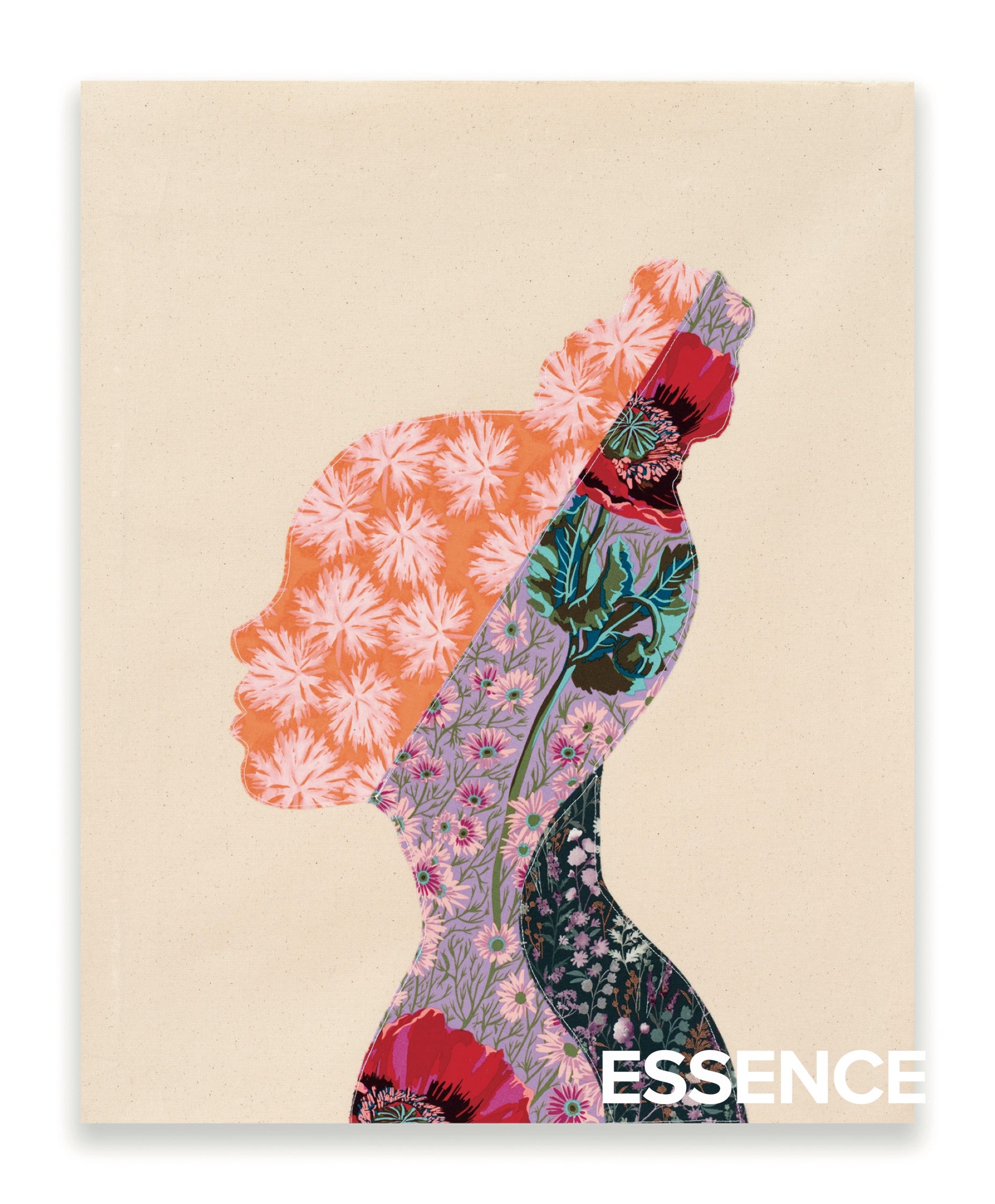
“This exhibition is very important for me, and it comes from a cultural place,” the interdisciplinary artist says. “The term ‘fresh up’ in the Bahamas means that you’ve dressed well and you’re looking really good. I felt as though it was such a celebratory term—to connect with someone in such a positive and uplifting way. To me, this exhibition is a celebration of Blackness, specifically of Black women.”
Swaby’s portraits have grown in popularity in recent years; her debut show, Both Sides of the Sun, at the Claire Oliver Gallery in New York City, sold out before its official opening in April 2021. With her newfound acclaim comes a heightened sense of responsibility to remain true to her practice—and to keep firmly in mind why she creates and for whom.
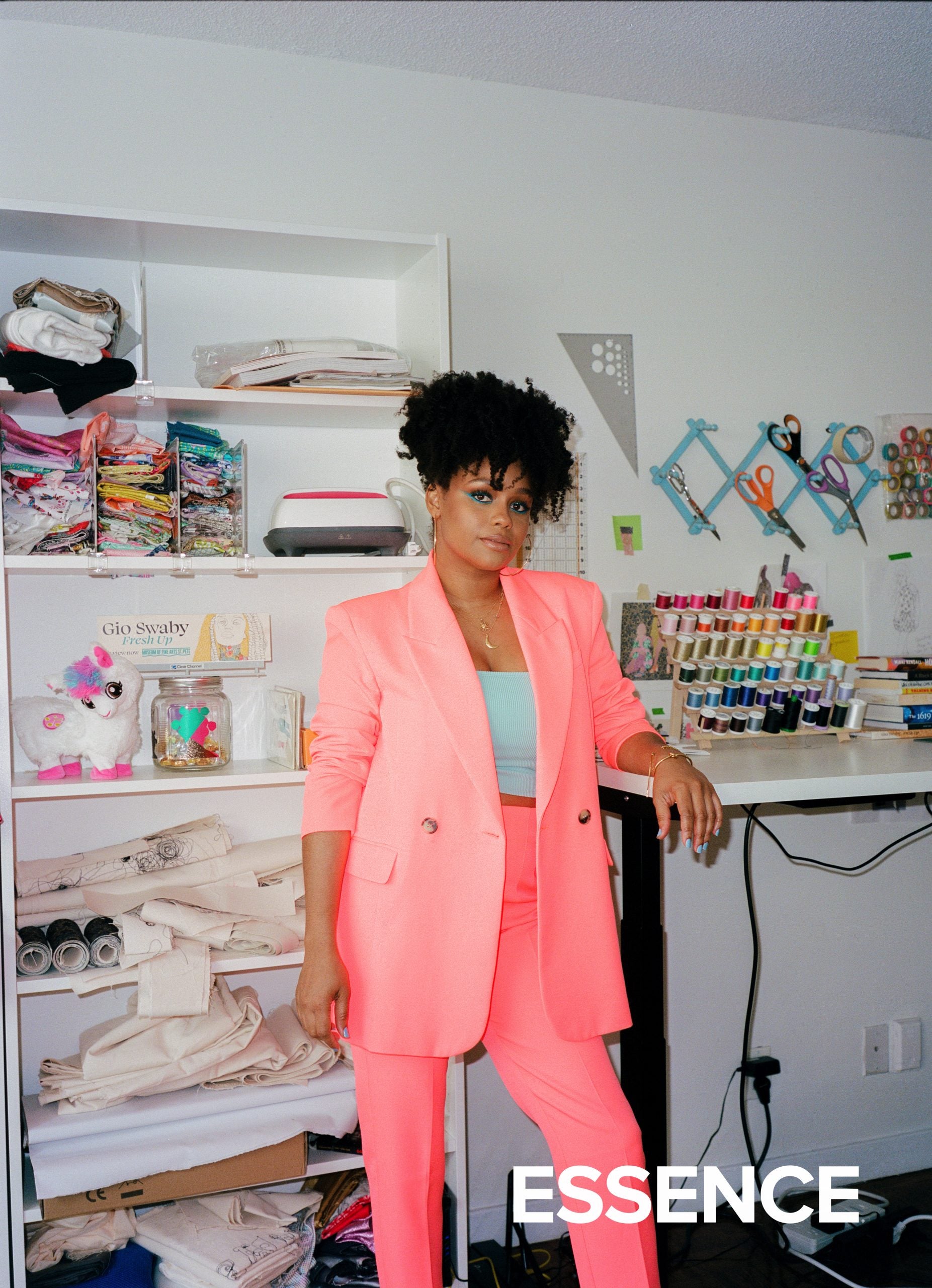
“I feel like any big change in life affects your process as an artist,” Swaby says. “I don’t want to approach my artistic endeavors asking, ‘What are people responding to most?’ I think at that point you lose the authenticity, the honesty in your practice.” The remedy, she adds, is “you just have to trust yourself, trust your process and have trust in your knowledge as a visionary when you’re creating.”
Maintaining perspective on what’s most important to her keeps the multitalented luminary grounded as her profile continues to rise. “What I want the most is to leave a legacy of love,” Swaby says. “I’ve learned, through the loss of my parents, to shift the way that I look at life and success. My priority is now the people in my life, investing in myself and being able to share this love with a wider audience. I want to go down this path in hopes of opening new doors—and to reach back as a part of the cultivation of a new generation of artists.”
This article appears in the September/October 2022 issue of ESSENCE magazine on newsstands now.